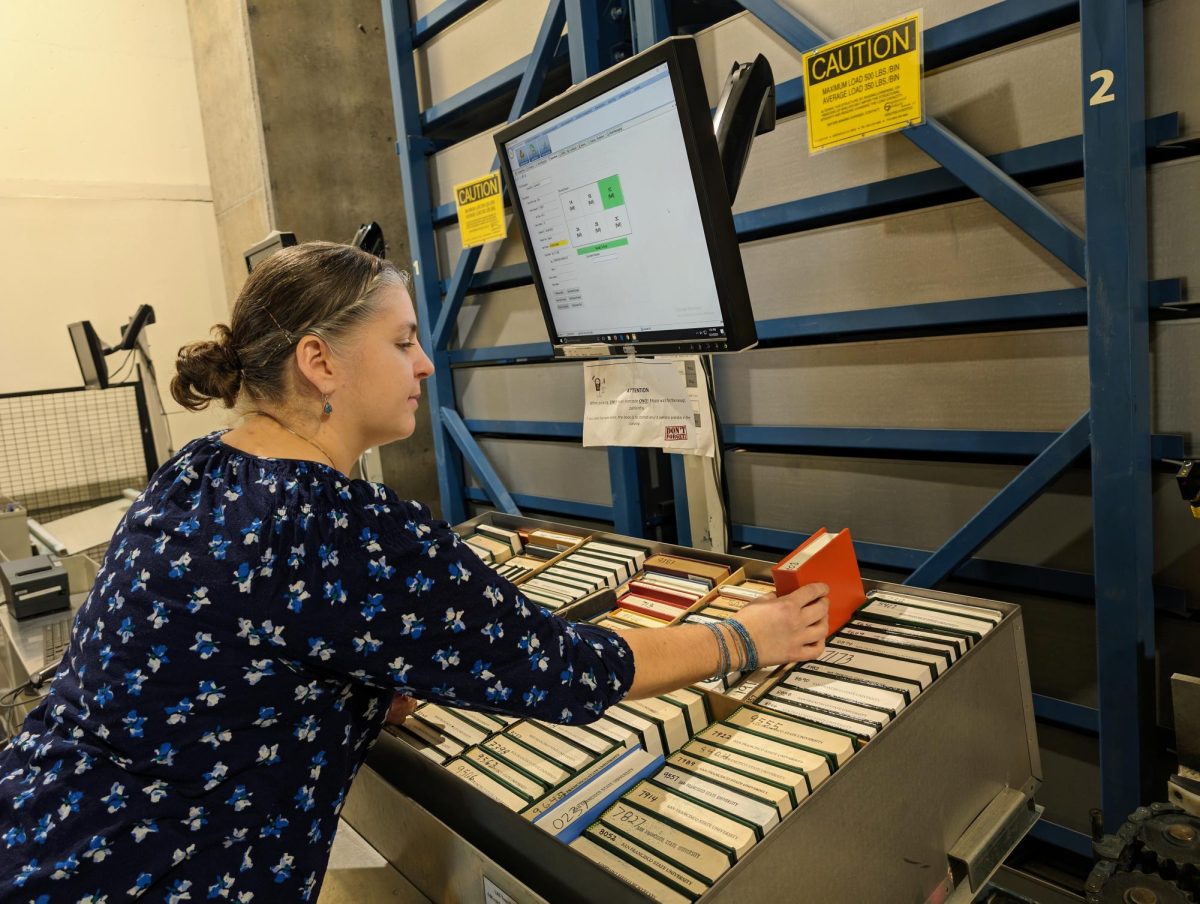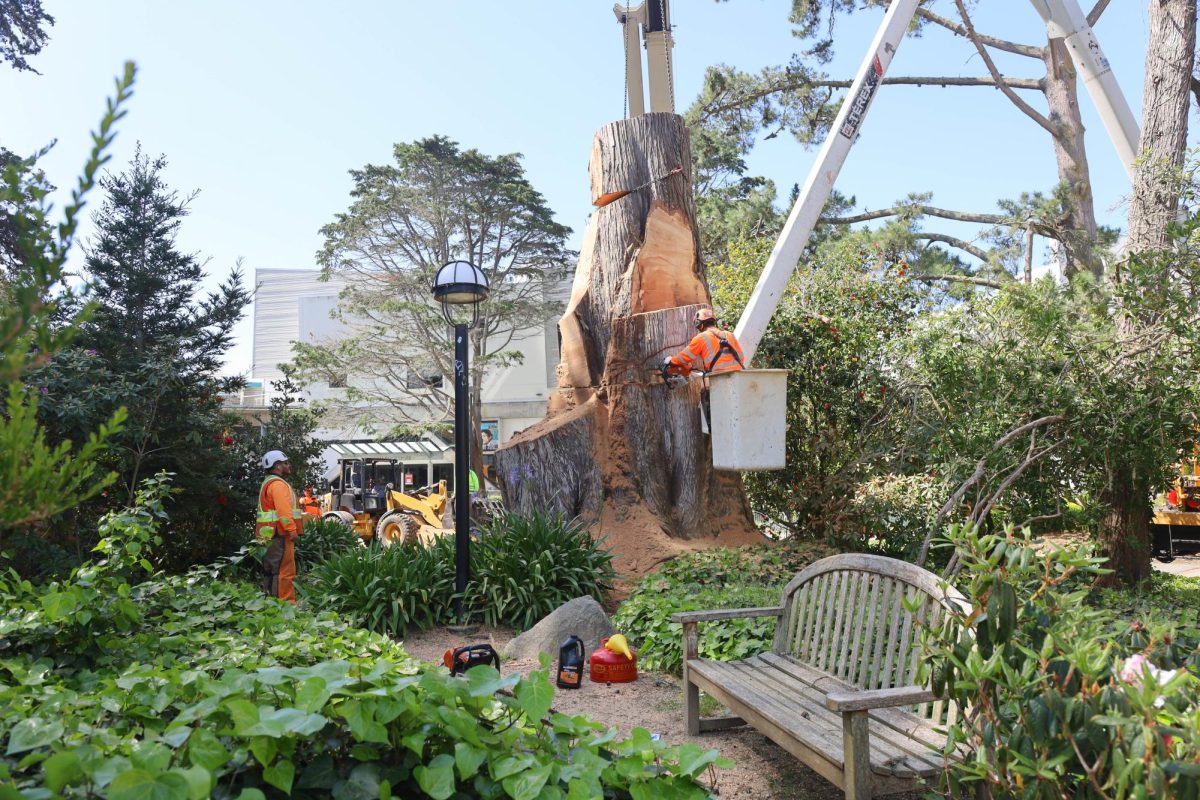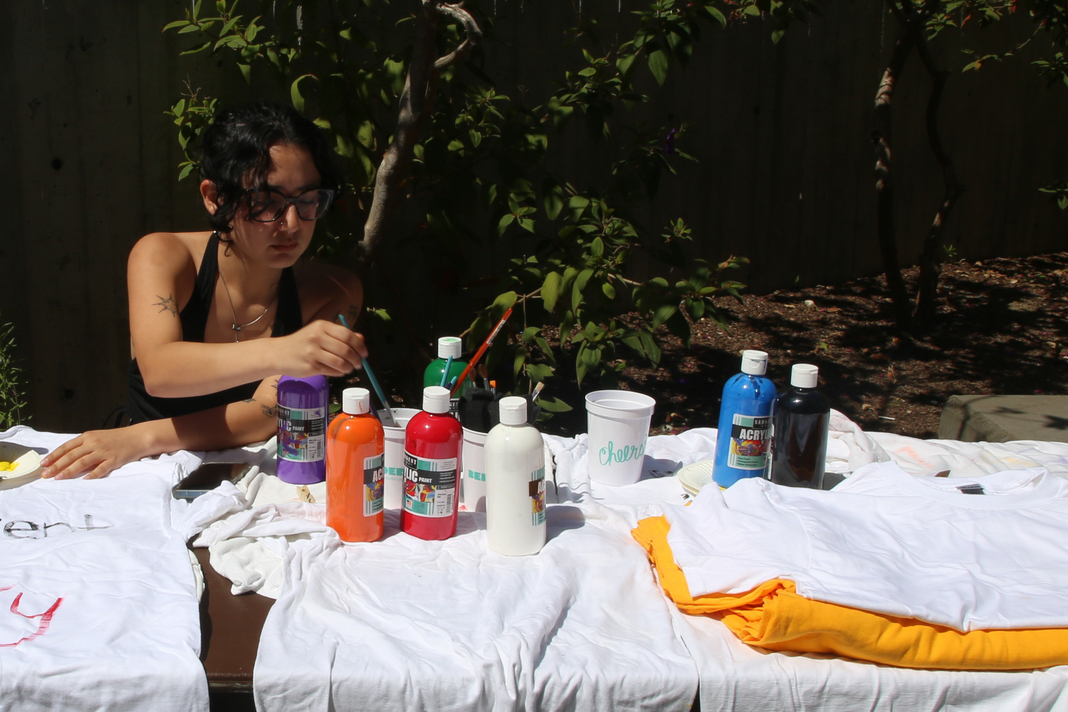There’s a three-story robot in the J. Paul Leonard Library that over 4,000 people walk past every day. Many of them don’t even know it’s there.
The library retrieval system is a type of automated storage and retrieval system. It spans the ground, first and second floors of the San Francisco State University library building and contains about 75% of the library’s circulating collection, including books, government documents, film, CDs and vinyl records.
University Librarian Deborah C. Masters has been in charge of the J. Paul Leonard Library since 1995. She remembers when the library was filled with bookshelves, called “stacks” in librarian jargon.
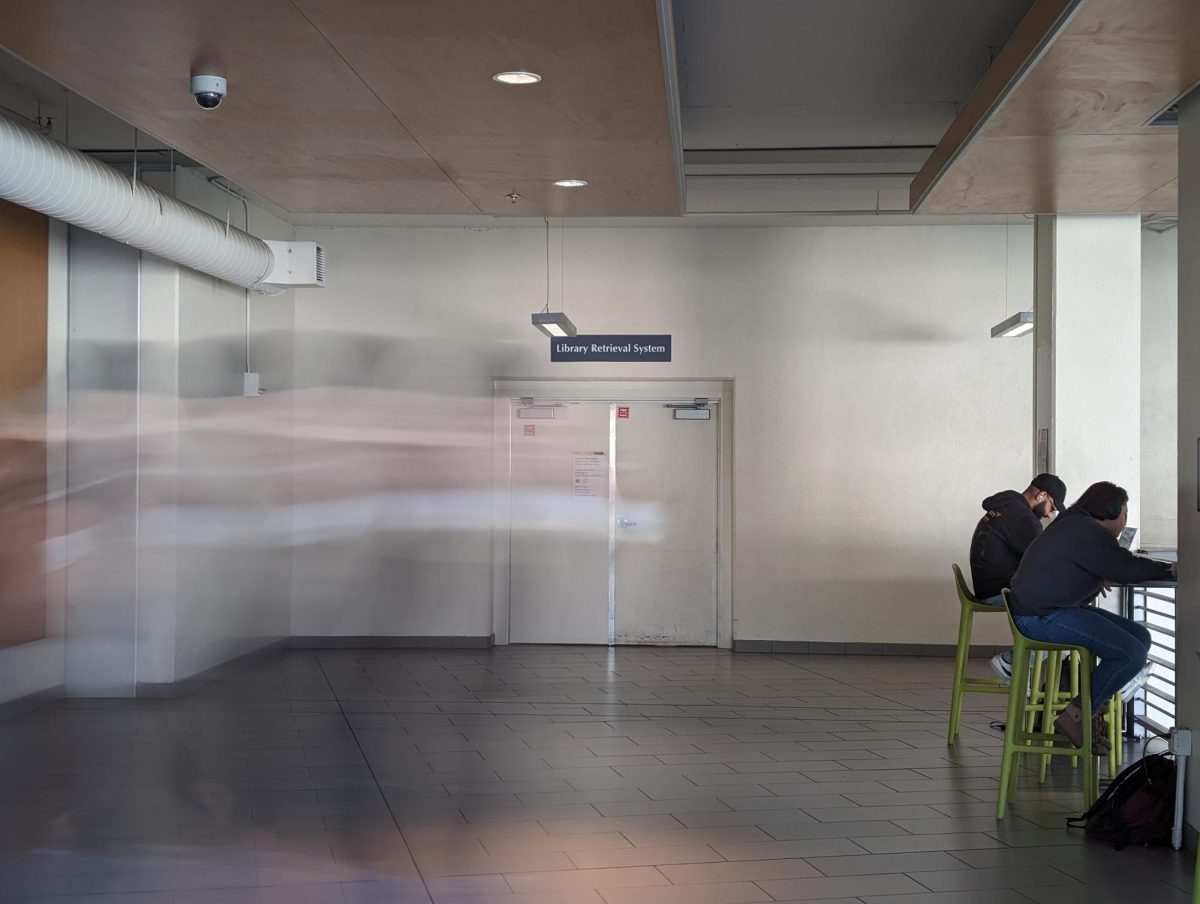
“We had miles and miles, it felt like, of book stacks,” Masters said. “That’s not where people spend their time. It’s not the kind of space they need. They want space to study by themselves and study interactively with other people, and that’s what we can offer them now.”
From 2008 to 2012, the library building underwent a $108 million renovation and expansion project, growing from 282,500 to 362,500 square feet. The library retrieval system was installed in 2010, freeing up space throughout the library for students. It took six weeks to move books into the system during the summer of 2010, said Andrea Guidara, the head of access services for the J. Paul Leonard Library.
“When you’re just out in the sea of tables, just imagine that being stacks of books instead,” Guidara said. She was a student assistant during the renovation and now directly oversees the library retrieval system.
When library patrons use OneSearch, the library’s catalog search system, they can see the locations of library items in the circulating collection. Items located inside the library retrieval system can be requested online or in person at the checkout and pickup desk on the first floor.
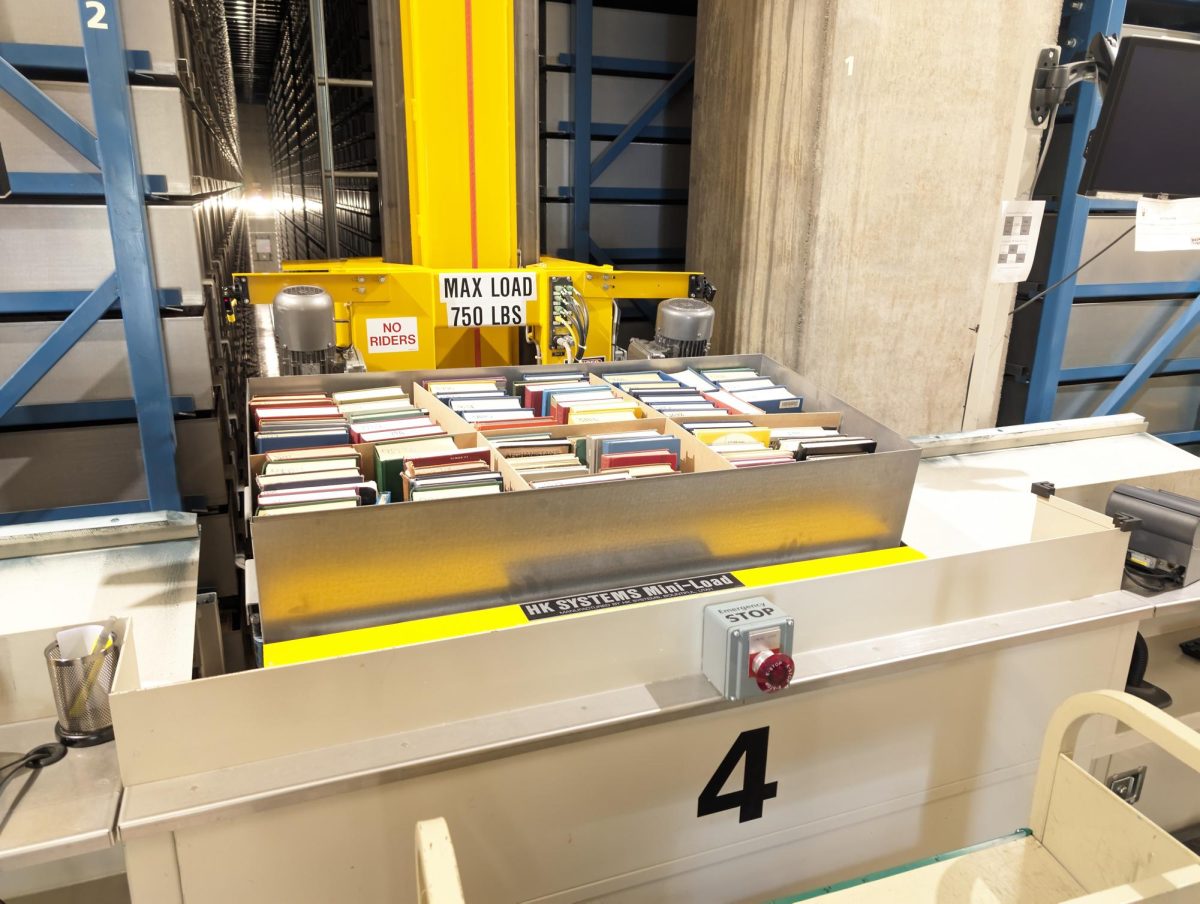
When somebody requests an item through OneSearch, the retrieval system moves a crane to pull out a bin. Each bin is divided into six sectors. The retrieval system tells a library employee the barcode of a requested item and which sector of a bin the item is located in. The last four digits of an item’s barcode are written on top of each item. An employee removes the item by hand and scans it, emailing a notification to the requester.
Once a book or other item has been retrieved, a requester can pick up the item at the checkout and pickup desk. According to Guidara, the library retrieval system fulfilled 2,904 OneSearch requests in 2022.
“We’ve got five aisles here; each aisle has a crane and then each aisle also has two computer stations on each side,” Guidara said.
The system has 20,164 bins in total. The outer four aisles have 6-inch and 10-inch bins, while aisle three has 12-inch and 15-inch bins. Most books can be returned to any of the outer four aisles.

“We’ve got different-sized bins to accommodate different-sized books,” Guidara said.
The mezzanine on the first floor of the library is where almost all work is done in the library retrieval system room. The door to the workspace is across from the condiment station of Peet’s Coffee, the area where patrons can help themselves to napkins, straws and half-and-half.
Library visitors are welcome to peek inside if the doors are open.
Victor Aguilar, the SFSU presidential aide, provides tours of the campus to prospective students. He said he takes them to the library retrieval system on every tour.
“Whenever I think of a library, I just think about going into the bookshelves and spending hours upon hours looking for a book,” he said. “So, this is really cool because it saves a lot of time and I just think it’s innovative.”
Aguilar, a former student at SFSU, also appreciated that the system was a more efficient way to store books and other library items, allowing the library to have more study spaces for students instead of shelves.
“It’s very cool and very high-tech,” said Julia Pappas, a prospective student Aguilar was giving a tour to. “I have never seen anything like this before.”
Students can contact Guidara for a guided tour and demonstration of the library retrieval system. Faculty wanting to bring their classes for tours and demonstrations of the system should contact their library liaisons.




